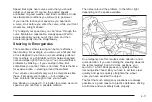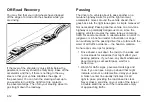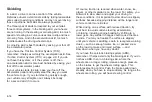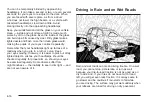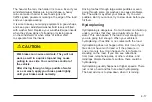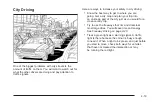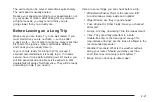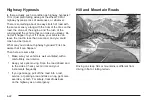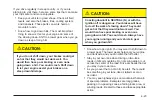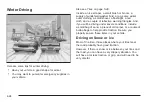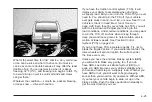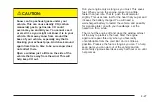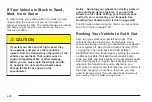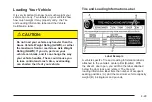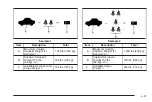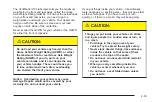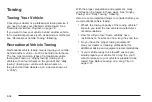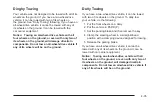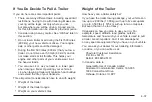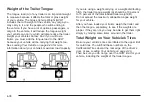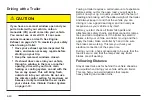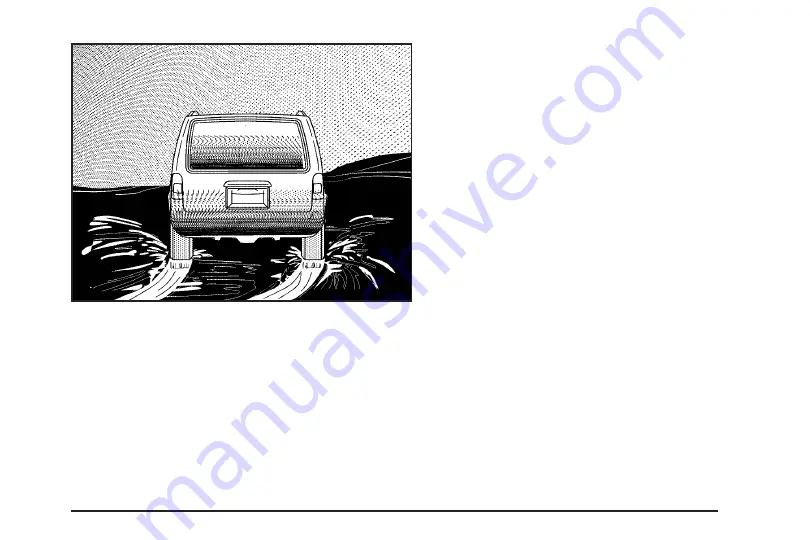
What is the worst time for this? Wet ice. Very cold snow
or ice can be slick and hard to drive on. But wet ice
can be even more trouble because it may offer the least
traction of all. You can get wet ice when it is about
freezing, 32°F (0°C), and freezing rain begins to fall. Try
to avoid driving on wet ice until salt and sand crews
can get there.
Whatever the condition — smooth ice, packed, blowing,
or loose snow — drive with caution.
If you have the traction control system (TCS), it will
improve your ability to accelerate when driving on
a slippery road. But you can turn the TCS off if you ever
need to. You should turn the TCS off if your vehicle
ever gets stuck in sand, mud, ice, or snow. See If Your
Vehicle is Stuck in Sand, Mud, Ice or Snow on
page 4-28. Even though your vehicle has TCS, you will
want to slow down and adjust your driving to the
road conditions. Under certain conditions, you may want
to turn the TCS off, such as when driving through
deep snow and loose gravel, to help maintain vehicle
motion at lower speeds. See Traction Control
System (TCS) on page 4-8.
If you do not have TCS, accelerate gently. Try not to
break the fragile traction. If you accelerate too fast, the
drive wheels will spin and polish the surface under
the tires even more.
Unless you have the anti-lock braking system (ABS),
you will want to brake very gently, too. If you do
have ABS, see Anti-Lock Brake System (ABS) on
page 4-6. ABS improves your vehicle’s stability when
you make a hard stop on a slippery road. Whether you
have ABS or not, you will want to begin stopping
sooner than you would on dry pavement. Without ABS,
if you feel your vehicle begin to slide, let up on the
brakes a little. Push the brake pedal down steadily to
get the most traction you can.
4-25
Summary of Contents for 2005 Equinox
Page 5: ...These are some examples of symbols that may be found on the vehicle v ...
Page 6: ... NOTES vi ...
Page 19: ...Put someone on it Get it up to speed Then stop the vehicle The rider does not stop 1 13 ...
Page 68: ... NOTES 1 62 ...
Page 110: ... NOTES 2 42 ...
Page 113: ... NOTES 3 3 ...
Page 114: ...Instrument Panel Overview 3 4 ...
Page 234: ... NOTES 4 44 ...
Page 246: ...Engine Compartment Overview When you open the hood you will see the following 5 12 ...
Page 324: ... NOTES 5 90 ...

